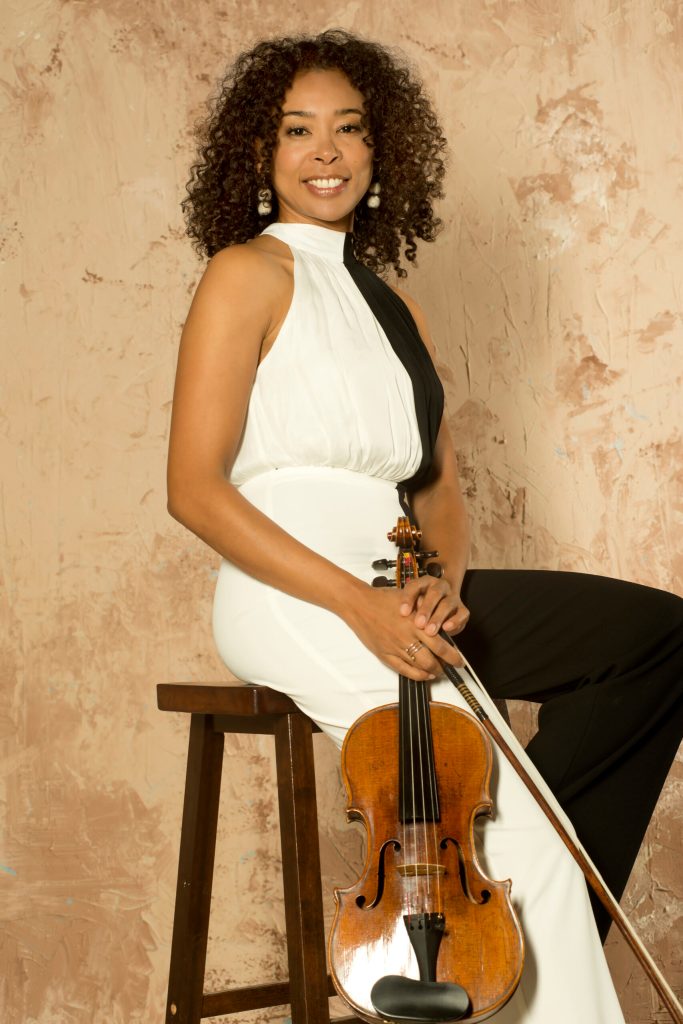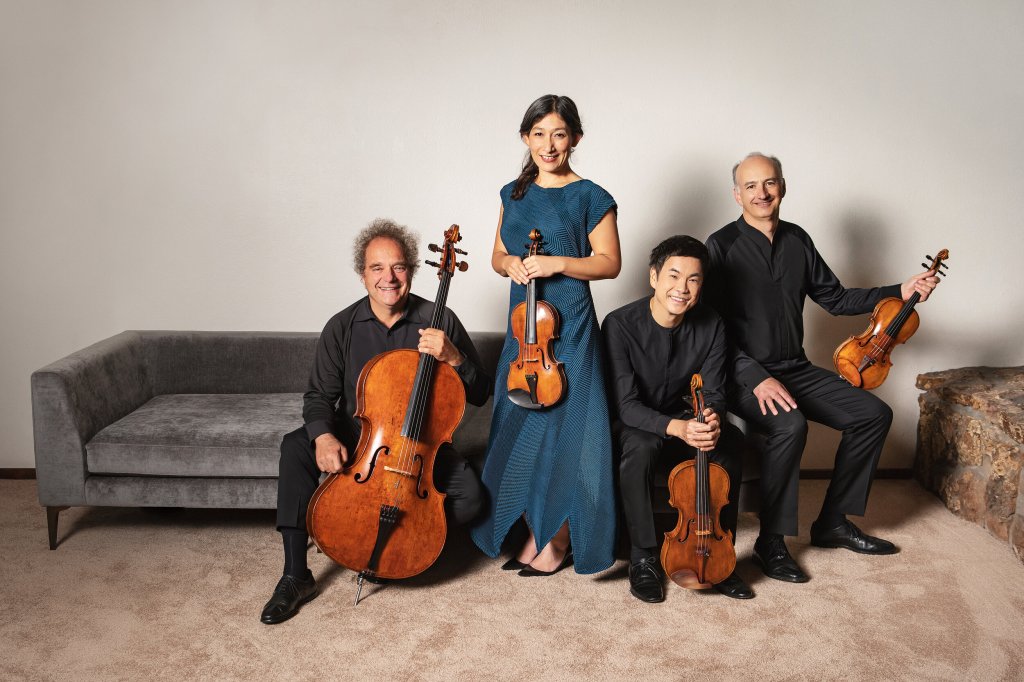Haydn and Dvořák complete program for March 10 and 11
By Peter Alexander March 5 at 5:08 p.m.
The violist and composer Nokuthula Ngwenyama burst onto the classical musical scene in 1993, when she won the Primrose International Viola Competition at the age of 16.
Ngwenyama followed that distinction by winning the Young Concert Artist International Auditions the following year, and later an Avery Fisher Career Grant. An American of Ndebele (Zimbabwean) and Japanese descent, she attended the Coburn School of Performing Arts in Los Angeles and the Curtis Institute in Philadelphia. She later attended the Paris Conservatory as a Fulbright Scholar.
With concerts Sunday and Monday (March 10 and 11; details below), the Takács Quartet brings her Flow to Boulder audiences on a program that also includes works by Haydn and Dvořák. The performance will be presented for an in-person audience and by streaming with tickets available here.
The Takács presented the premiere of Flow in Berkeley last fall and have made it a part of their touring repertoire since. Flow was commissioned by the Takács and the presenter Cal Performances after their second violinist, Harumi Rhodes, got to know Ngwenyama at the Marlboro Music Festival in Vermont.
The quartet’s request was for a piece “inspired by the natural world.” Taking the request very seriously, Ngwenyama writes in her program notes that she “researched a wide array of subjects,” including “the life cycle, carbon reclamation, environmental protection, animal communication, starling murmurations, our last universal common ancestor (LUCA), black hole collisions and the sub-atomic realm.”
In conclusion, she writes, “Everything in nature flows and develops through time. Flow can be expressed mathematically, psychologically, physically, visually, and, now, via string quartet. . . . Enjoy and go with the flow, we only know what we know.” Her extensive notes include NASA diagrams of the expansion of the universe over 13.77 billion years.
Flow is in four movements, arranged in an essentially traditional order: Prelude, Lento, Quark Scherzo, and Finale. The progression of movements is loosely linked in Ngwenyama’s notes to the development of the universe through time.
Haydn’s “Sunrise” Quartet is among the composer’s last works in a genre that he created and defined. It was published in 1797, the fourth in a set of six quartets, opus 76. The title comes from the beginning of the first movement, with a sustained chord and a rising line in the first violin that suggests the sun rising above the horizon. That musical idea is developed throughout the movement, which is followed by the usual slow movement, a minuet and an energetic finale.
Sometimes called the “Slavonic Quartet,” Dvořák’s Quartet in E-flat major was written for and dedicated to violinist Jean Becker and the Florentine Quartet, a professional ensemble active in the composer’s time. Dvořák had attracted attention with the publication of his Slavonic Dances for two pianos, and Becker specifically asked for a quartet in the same style, based on folk-dance idioms.
The most conspicuously “Slavonic” elements are heard in the second movement which is labelled “Dumka,” a type of movement derived from Ukrainian folk music that alternates between melancholy and exuberant sections; and the finale, which uses a rapid Czech dance called the skočná.
* * * * *
Takács Quartet
- Haydn: String Quartet in B-flat major, op. 76 no. 4 (“Sunrise”)
- Nokuthula Ngwenyama: String Quartet Flow
- Dvořák: String Quartet No. 10 in E-flat major, op. 51
4 p.m. Sunday, March 10
7:30 p.m. Monday, March 11
Grusin Music Hall
In-person and streaming TICKETS HERE
NOTE: Minor typos corrected March 7.


